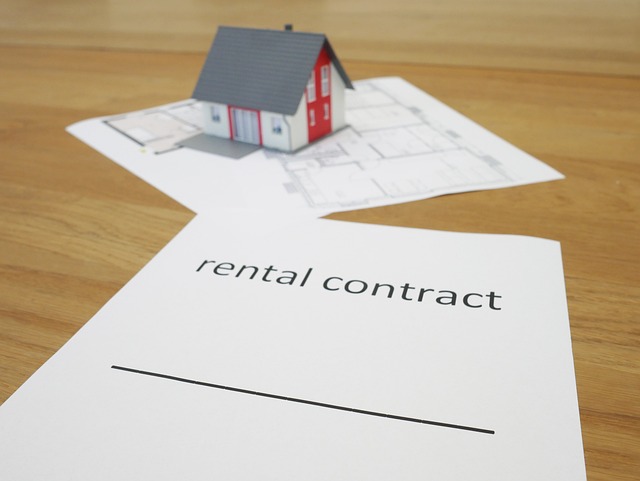How to find Affordable Apartments For Rent: A Guide to Find Best Housing Options
Finding affordable apartments in prime locations can be a challenge, but with the right approach, it's possible to discover your perfect low-cost housing option. Whether you're looking for flexible lease options for affordable apartments or great amenities without breaking the bank, this guide will help you navigate the world of budget-friendly rentals.

Finding a place to call home is one of the most significant financial decisions you’ll make, and securing an affordable apartment requires a combination of research, flexibility, and strategic planning. The rental market varies widely depending on location, demand, and available inventory, making it crucial to approach your search with clear priorities and realistic expectations. By leveraging online resources, exploring diverse neighborhoods, and understanding what amenities truly matter to you, you can uncover housing options that align with both your lifestyle and budget.
Explore Different Neighborhoods to Maximize Affordability
One of the most effective ways to reduce rental costs is to expand your search beyond the most popular or centrally located neighborhoods. Areas that are slightly farther from downtown districts or major commercial centers often offer significantly lower rent while still providing access to public transportation, schools, and essential services. Research emerging neighborhoods that may be undergoing revitalization or development, as these locations can offer modern amenities at more competitive prices. Consider factors such as commute time, safety, local services in your area, and community atmosphere when evaluating different neighborhoods. Sometimes, a short additional commute can translate into substantial monthly savings, allowing you to allocate resources toward other financial goals.
Use Online Tools to Compare Affordable Apartments
The digital age has transformed apartment hunting, providing renters with powerful platforms to compare listings, read reviews, and assess pricing trends. Utilize rental websites and mobile applications that aggregate listings from multiple sources, allowing you to filter results by price range, square footage, number of bedrooms, and specific amenities. Many platforms offer virtual tours, detailed floor plans, and neighborhood insights that help you make informed decisions without visiting every property in person. Set up alerts for new listings that match your criteria to ensure you’re among the first to respond when affordable options become available. Additionally, explore social media groups and community forums where landlords and property managers sometimes post rentals directly, potentially bypassing traditional listing fees.
Consider Apartments with Flexible Lease Options
Lease flexibility can be a valuable tool for managing rental costs and adapting to changing circumstances. Some landlords offer month-to-month leases or shorter-term agreements that, while sometimes priced slightly higher per month, provide the freedom to relocate or negotiate better terms as market conditions shift. Conversely, committing to a longer lease term, such as 18 or 24 months, may result in reduced monthly rent or waived fees. Discuss options directly with property managers to understand what flexibility exists and whether seasonal pricing variations could work in your favor. Additionally, inquire about lease renewal policies and potential rent increases to avoid unexpected costs down the line.
Prioritize Amenities to Maximize Value
While luxury amenities like swimming pools, fitness centers, and concierge services can enhance your living experience, they also contribute to higher rental prices. Carefully evaluate which amenities are essential to your daily life and which are simply nice to have. For instance, if you rarely use a gym, opting for an apartment without on-site fitness facilities could save you a significant amount each month. Focus on practical features such as in-unit laundry, adequate storage, energy-efficient appliances, and reliable heating and cooling systems. Consider whether nearby public amenities, such as parks, libraries, or community centers, can fulfill some of your recreational needs without the added cost of premium apartment features.
Understanding Rental Costs Across Different Markets
Rental prices vary dramatically depending on geographic location, property type, and local demand. To provide a general sense of what you might expect, below is a comparison of typical monthly rent ranges for one-bedroom apartments in various market types. These figures are estimates based on recent market data and should serve as a starting point for your research.
| Market Type | Typical Monthly Rent Range | Key Characteristics |
|---|---|---|
| Major Metropolitan Areas | $1,800 - $3,500 | High demand, extensive amenities, central locations |
| Mid-Sized Cities | $1,000 - $1,800 | Balanced cost and convenience, growing job markets |
| Suburban Areas | $900 - $1,500 | Family-friendly, quieter environments, longer commutes |
| Small Towns/Rural Areas | $600 - $1,100 | Lower cost of living, limited public transit, community-focused |
Prices, rates, or cost estimates mentioned in this article are based on the latest available information but may change over time. Independent research is advised before making financial decisions.
Useful Tips for Finding Affordable Apartments
Beyond the strategies already discussed, several additional tactics can help you secure a better deal. Start your search during off-peak rental seasons, typically late fall and winter, when demand is lower and landlords may be more willing to negotiate. Be prepared to move quickly when you find a suitable apartment, as affordable units in desirable areas often receive multiple applications within hours of listing. Gather all necessary documentation in advance, including proof of income, references, and credit reports, to streamline the application process. Don’t hesitate to negotiate rent or request concessions such as reduced security deposits, waived application fees, or included utilities. Building a positive relationship with landlords or property managers can also lead to more favorable terms and priority consideration for future vacancies.
Finding an affordable apartment requires patience, thorough research, and a willingness to remain flexible throughout the process. By exploring diverse neighborhoods, leveraging online comparison tools, considering lease flexibility, and prioritizing essential amenities, you can identify housing options that meet your needs without straining your finances. Remember that the rental market is dynamic, and staying informed about local trends and pricing patterns will empower you to make confident decisions. With the right approach and preparation, securing a comfortable and budget-friendly home is entirely within reach.




